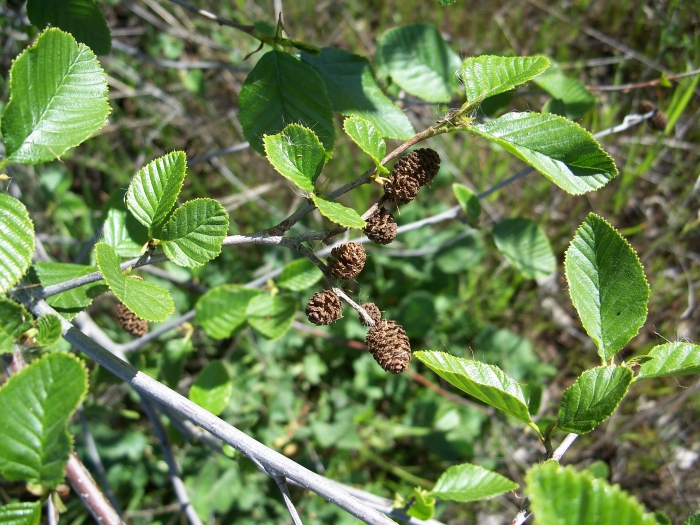White Alder
(Alnus rhombifolia)
White Alder (Alnus rhombifolia)
/
/

Eugene Zelenko
CC BY-SA 4.0
























































































Estimated Native Range
Summary
White Alder is notable for its rapid growth and adaptability to wet conditions. It features a straight trunk with smooth, light gray bark and a broad, rounded crown. The tree produces catkins which are not particularly showy, but its ability to stabilize streambanks and improve soil fertility through nitrogen fixation makes it valuable for restoration projects. It is often used in riparian restoration, as a shade tree in large landscapes, and for erosion control. White Alder requires abundant water and does well in full sun or partial shade, preferring soils with good drainage. It is relatively low-maintenance but can be susceptible to various diseases, including Phytophthora. Gardeners should be aware of its potential to spread if conditions allow.CC BY-SA 4.0
Plant Description
- Plant Type: Tree
- Height: 50-90 feet
- Width: 30-50 feet
- Growth Rate: Rapid
- Flower Color: N/A
- Flowering Season: Summer, Fall
- Leaf Retention: Deciduous
Growth Requirements
- Sun: Full Sun
- Water: High
- Drainage: Fast, Medium
Common Uses
Bee Garden, Bird Garden, Butterfly Garden, Edible*Disclaimer: Easyscape's listed plant edibility is for informational use. Always verify the safety and proper identification of any plant before consumption., Erosion Control, Low Maintenance, Rabbit Resistant, Water Garden
Natural Habitat
Riparian zones of the western United States, particularly along streams and rivers in California and Oregon
Other Names
Common Names: Mountain Alder , California Alder , Rhombie Leaf Alder
Scientific Names: Alnus rhombifolia , Alnus rhombifolia var. bernardina , Alnus rhombifolia var. ovalis , Alnus californica , Alnus rhombifolia var. bernardiana , Alnus rhombifolia var. typica
GBIF Accepted Name: Alnus rhombifolia Nutt.